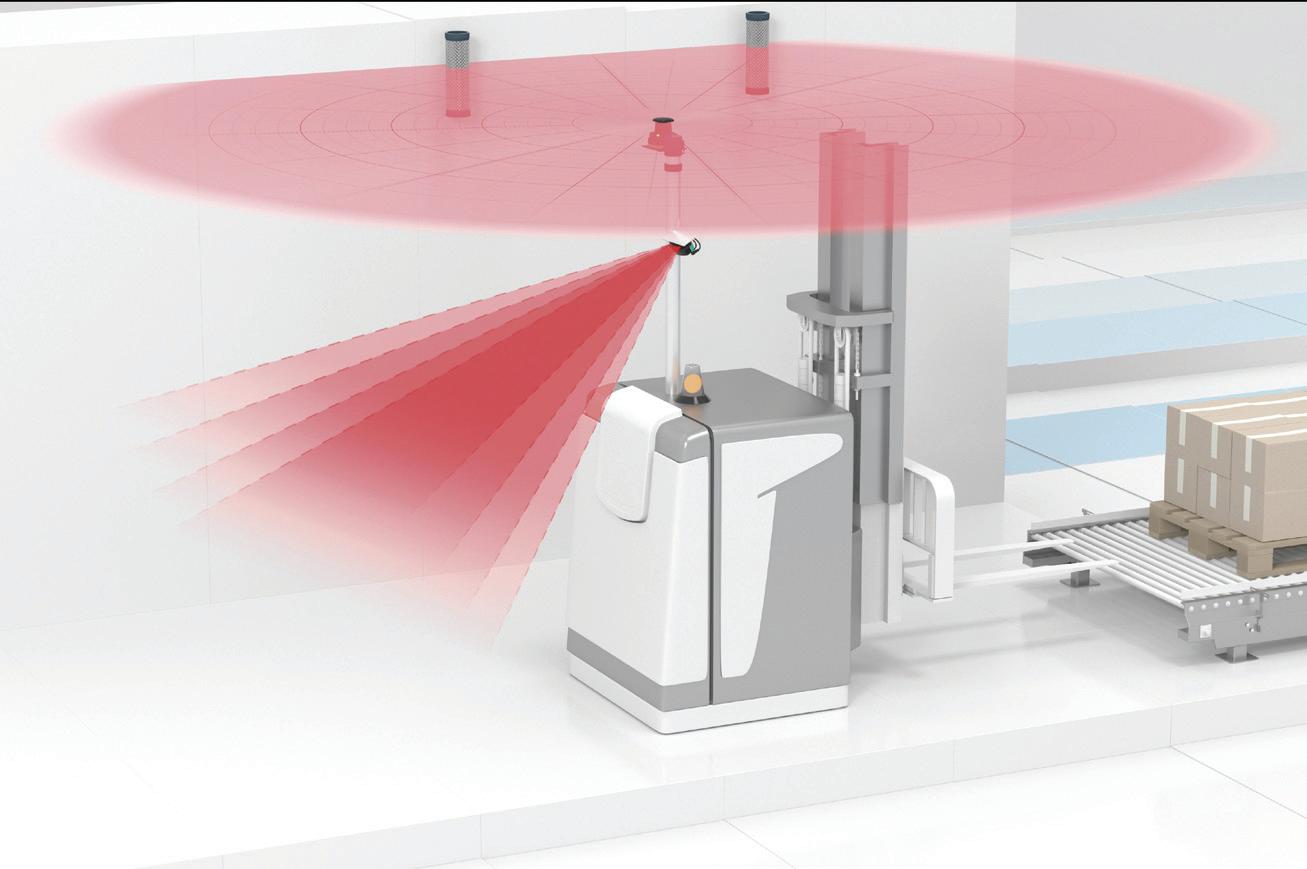
2 minute read
The Evolution of AMR Navigation
By Zach Steck, Market Specialist, Material Handling – AGV/AMR
In the world of autonomous mobile robots (AMRs), navigation is the greatest challenge facing material handling design engineering teams. Most commonly, this is accomplished using 2-D LiDAR scanners to identify structures in an environment and map the surrounding area. Data from the scanner, and possibly other sensing technologies, is input into usercreated software to determine the robot’s location on a virtual map. This navigation technique, which does not require additional hardware such as tapes, wires, or reflectors, is called “natural feature navigation” or “free navigation.” The 2-D LiDAR scanners used to accomplish this task provide highly accurate angular position data up to a full 360° rotation, as well as distance feedback per angular step. 2-D LiDAR has undoubtedly been the optimal solution for this type of free navigation in the market for many years.
As self-driving robots continue to evolve, new technological advances are solving increasingly complex applications and behaviors. The goal is to improve warehouse efficiency, accuracy, productivity, and throughput. One example of a growing trend in the AMR market is the introduction of mobile collaborative robots or “Cobots.” A cobot is a robot designed to interact directly with a human in a shared space. This means that humans and robots must coexist in close proximity. Collaborative robots are designed for the purpose of performing specific tasks, allowing the human worker to focus on more important priorities. This interaction between robots and humans creates new challenges for AMR navigation, where advanced sensor technologies become even more critical to the design and implementation of the machine.
Traditional 2-D LiDAR solutions offer many benefits, but for this challenging application, there is one key drawback: they can only detect a target in a single plane. Imagine a scenario where a robot is following a human target with a single-plane scanner. If the target bends down to pick up a dropped object, it will no longer be detected by the scanner. For this reason, these applications would need to use a system or scanner that can monitor objects at various height levels. This is where 3-D LiDAR or multilayer LiDAR sensors have become the ideal solution for these types of support task robots. They offer the same advantages as conventional LiDAR solutions by providing a high sampling rate and measurement density while enabling object perception in a 3-D space.
In general, the 3-D LiDAR or multilayer LiDAR sensors provide information that is critical to the navigation and maneuverability of the robot. Another important aspect of these cobots is safety. The self-driving robots must be able to safely navigate the facility and perform tasks such as following a human target without putting the robot itself or others in the facility at risk. As a result, it is common practice to incorporate additional safety-related sensor technologies to perform specific tasks such as collision avoidance. These products carry safety approval to ensure that personnel working in close proximity are protected from harm by providing the necessary redundancy and self-monitoring features. One example technology for this purpose is safe ultrasonic sensor systems. Safety ultrasonic sensors deliver reliable protection results in any environment due to their natural resistance to dirt and debris. Combining 3-D LiDAR with enhanced safety solutions changes the game for collaborative robots and makes material handling easier than ever.









